The world of injectable fillers has experienced an incredible boom in popularity over the past decade. Not only have a barrage of new products entered the market, but the FDA has approved several new treatment areas. These innovative, minimally-invasive volume enhancers excel at smoothing wrinkles, defining jawlines, and plumping lips, but can dermal fillers replace facial plastic surgery?
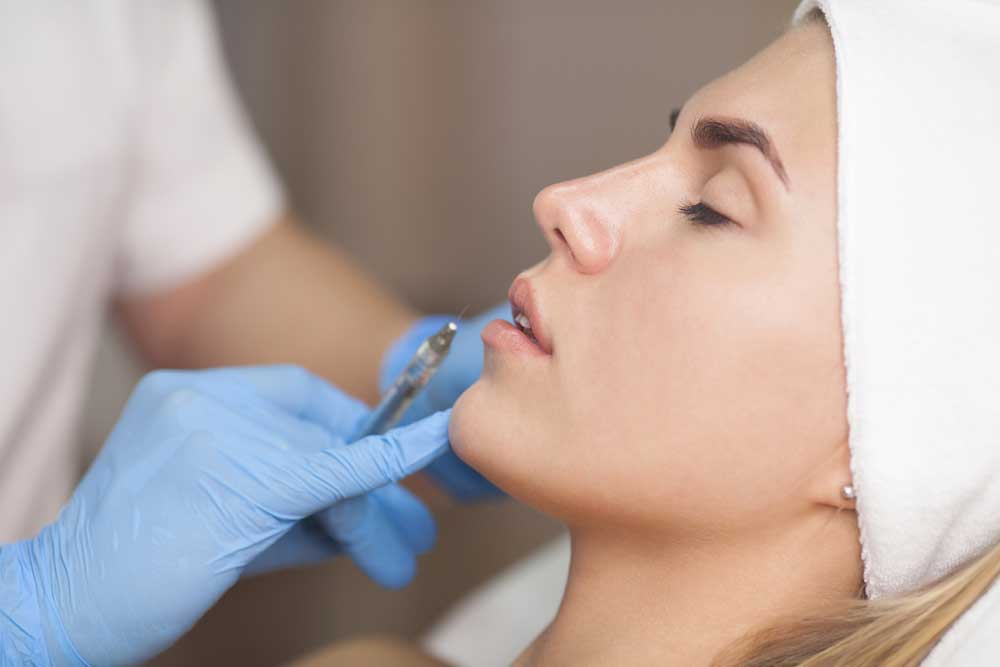
When are Fillers Not Enough?
“Fillers are an increasingly useful tool to have in your age-defying toolbelt, but their effectiveness comes to a halt when you are trying to correct structural concerns of the face,” explains Dr. Michael Philbin, a board-certified plastic surgeon and partner at Edina Plastic Surgery. “If a patient has significant sagging skin in the lower face due to extensive collagen, fat, and bone loss, or their facial bone structure results in a bump on their nose or a recessed chin, facial surgery may be a superior and longer-lasting option. In addition, the face can only withstand so much volume being injected into it before it looks abnormal or unnatural. Although dermal filler is less invasive than surgery, surgery may yield a far more natural-looking result. Surgery may even be more cost-effective in the long run!”
Although the dermal fillers offered at Edina Plastic Surgery’s medical spa, Skin Artisans, can often help you achieve a more youthful-looking appearance, here are five instances where facial plastic surgery may be your better option.
#1 – When sagging skin or facial laxity is too extensive
Facial volume loss is a natural occurrence with aging. The progressive decrease in collagen production, the loss of facial fat, and the deterioration of bone can all lead to sagging skin and facial laxity. Although fillers can help address these changes when they are first noticed by restoring volume and definition, they are not cost-effective or very successful when facial laxity is extensive.
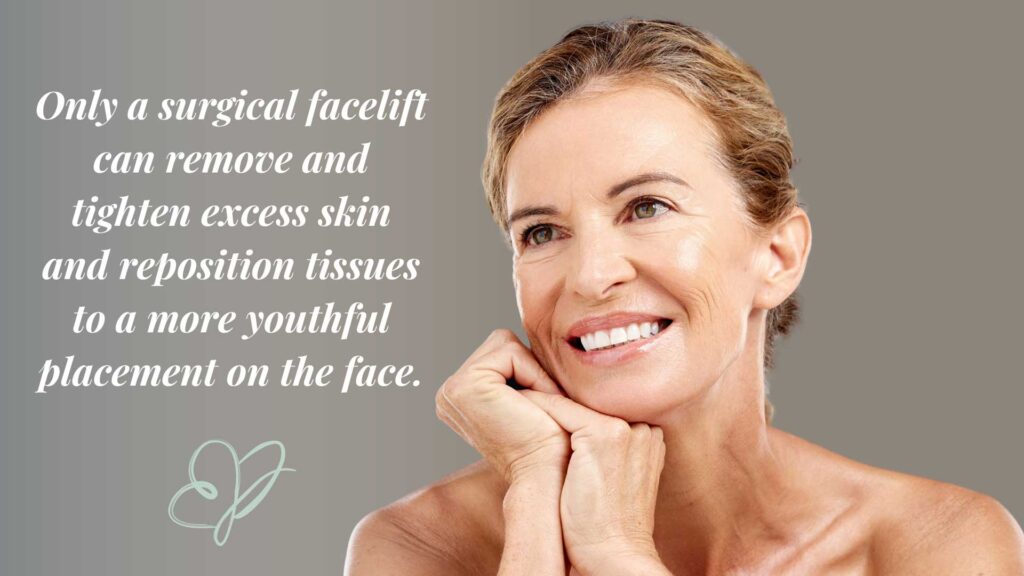
“The triangle of youth refers to the inverted triangle shape our faces have when we are young,” says Dr. Philbin. “At this stage, our cheekbones are high and wide, and our chins come to a point. But as we age, this triangle flips, and the prominence becomes anchored on a wider lower face due to sagging skin. This inversion creates a heavy, drooping appearance to the low face that may become exaggerated when too much filler is placed here. Only a surgical facelift can remove and tighten excess skin and reposition tissues to a more youthful placement on the face.”
#2 – When aesthetic improvements to the shape of the nose are desired
Although social media is filled with images of “lunchtime nose jobs” achieved with dermal filler, the truth is that using filler in the nose area is highly advanced and can be dangerous if performed by an inexperienced injector.
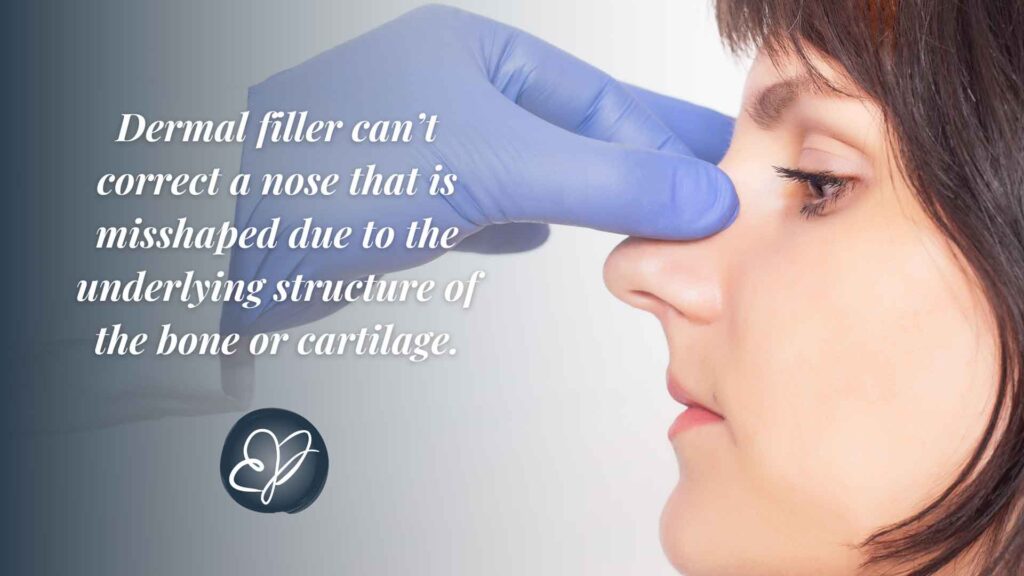
“Dermal fillers may be useful to smooth out a minor bump on the nose temporarily, but they can’t correct a nose that is misshaped due to the underlying structure of the bone or cartilage,” says Dr. Philbin. “If a patient has an asymmetrical nose, a disproportionally large nose, or a bulbous or hooked nasal tip, only rhinoplasty surgery will be an effective method of correction.”
#3 – When the chin is significantly recessed
The new JUVÉDERM® VOLUX® XC is a wonderful option to temporarily add volume to the chins of patients with very minor chin recession. Doing so enhances the projection of the chin to bring it into better balance with the rest of the face and improves the patient’s profile. But, a chin implant may be a more cost-effective and effective solution for permanent improvement to a deeply recessed chin.
“Dermal fillers are predominately comprised of hyaluronic acid, which makes them soft in nature,” explains Dr. Philbin. “This is generally desirable in the skin when filling a wrinkle or injecting the lips because we don’t want to see or feel the filler. But dermal filler cannot mimic the structural support of bone. A chin implant is generally best for patients seeking lasting correction for a weak or recessed chin because it is firmer and can achieve a more defined, contour result in the chin. Plus, a patient doesn’t need to return every year to have their filler refreshed to maintain their results, making a chin implant more cost-effective.”
#4 – When lips are exceedingly thin with a minimal surface area
Dermal fillers like JUVÉDERM® and Restylane® shine when it comes to plumping lips and adding beautiful definition to their shape. But if a patient has genetically thin lips that show little to no surface area, fillers may actually make lips look unnatural.
“Some patients are born with almost non-existent lips,” says Dr. Philbin. “Lips can also thin with aging, and the top lip can even lengthen and turn downward. In some cases, dermal filler can help, but in many cases, it can make super thin lips look abnormal. A surgical lip lift can help flip the upper lip to reveal more surface area, which gives the impression of more fullness to the upper lip. The incision is made directly under the nose, so scarring is minimal and fades easily into the creases here with time.”
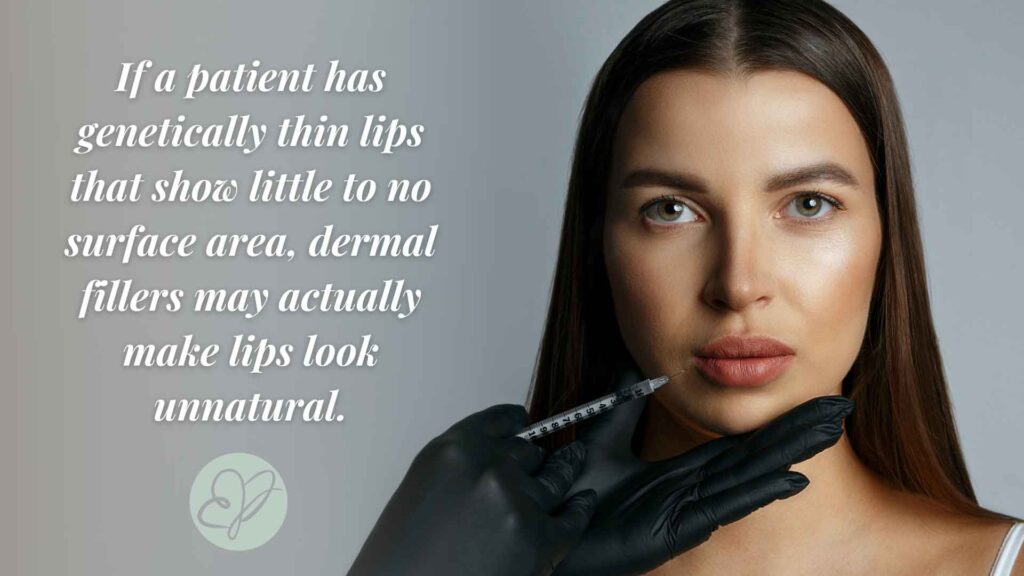
#5 – When the skin around the eyes has extensive sagging, or heavy under-eye bags are present
Our eyes tend to show the first signs of aging on our faces. UV exposure, squinting, smiling, and lifestyle factors can leave us with prominent lines around the corners of our eyes and sagging skin in both the upper and lower eyelids. Although BOTOX® Cosmetic is very effective at smoothing crow’s feet around the eyes, it does nothing for sagging skin. In addition, dermal filler may help smooth the appearance of bags under the eyes or even add volume to hollow under eyes, but it is only a temporary solution to an ongoing issue and can be dangerous when performed by an inexperienced or unqualified injector.
“If a patient has significant sagging skin in the upper or lower eyelid area, a surgical blepharoplasty is a much better option than dermal filler,” advises Dr. Philbin. “Dermal fillers restore volume but cannot remove excess skin that may hood over the eye or cause drooping below it. Blepharoplasty surgically excises excess skin and tightens the remaining tissue to rejuvenate the eyes, creating a fresher, more awake, and youthful appearance. A lower lid blepharoplasty can also remove distended fat pads under the eyes that may contribute to puffiness or bagging under the eyes.”
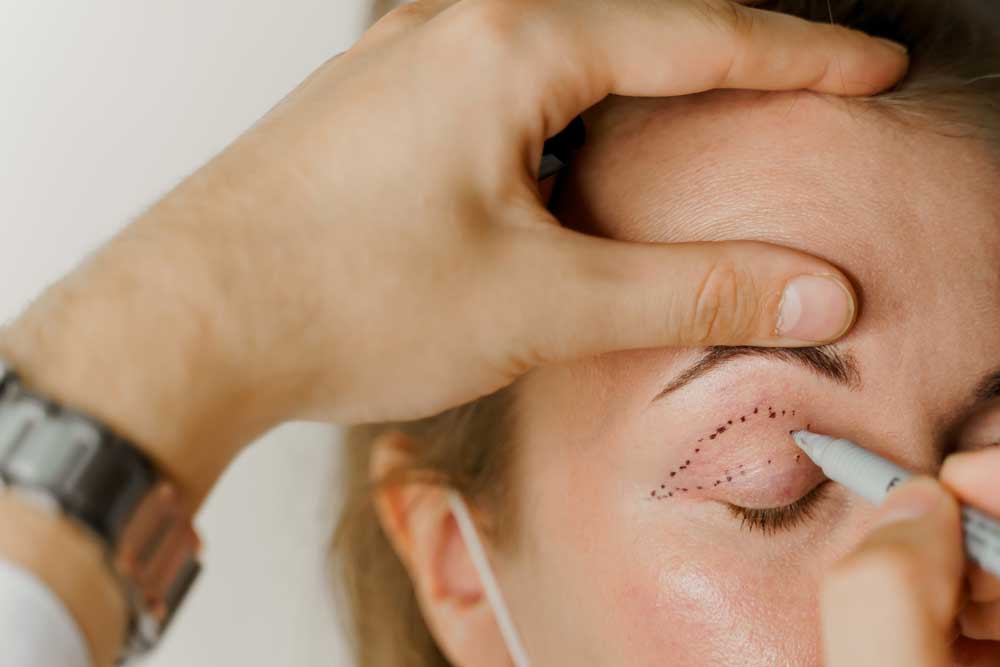
“The anatomy of the eye area is very complex,”says Dr. Philbin. “An injector must understand and respect an intricate network of vessels, fat, muscles, nerves, and vital ducts to safely inject dermal filler in this area. Side effects from poor injection technique can range from tiny bumps under the eyes all the way to blindness if the filler is injected into a blood vessel. A patient must seek out an injector licensed, trained, experienced, and skilled at injecting the under eyes if they pursue this treatment option. The injection specialists at Skin Artisans are RNs and NPs that meet all of these criteria.”
Are you questioning whether dermal fillers or surgery is the best option to meet your aesthetic goals? Schedule a complimentary consultation with Dr. Michael Philbin or another board-certified plastic surgeon at Edina Plastic Surgery by CLICKING HERE.


